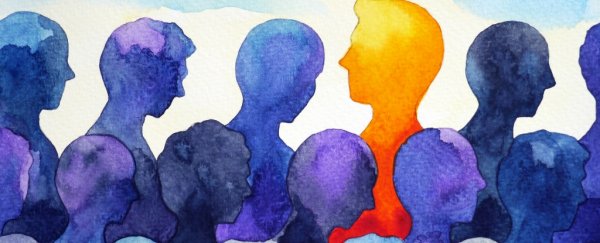When creating a universal diagnostic tool for psychiatric illness, imperfection is inevitable. Now in its fifth edition, the widely-used 'mental health bible', known as the Diagnostic and Statistical Manual (DSM-5), has had a slew of controversies and some want to do away with it entirely.
As far back as 1968, experts have criticised the manual's myriad flaws, arguing that its "disjunctive" categories are "unusable in a scientific context". A detailed analysis of five key chapters in the current edition has now come to a similar conclusion.
Researchers from the University of Liverpool argue that today's diagnoses for ' schizophrenia', 'bipolar disorder', 'depressive disorders', 'anxiety disorders' and 'trauma-related disorders' are scientifically worthless as tools to identify these conditions.
Analysing chapters for these categories in DSM-5, the authors conclude that the manual's rules are inconsistent and subjective, leaving a huge amount of overlap in symptoms between diagnoses.
The results mirror a study from 2014, which demonstrated that when using both the fourth and fifth edition, two people could receive the same diagnosis without sharing any common symptoms in the majority of cases.
That very same year, another team of researchers calculated that in the DSM-5 there are 270 million combinations of symptoms that would meet the criteria for both PTSD and major depressive disorder.
"This study provides yet more evidence that the biomedical diagnostic approach in psychiatry is not fit for purpose," says co-author Peter Kinderman, a clinical psychology researcher at the University of Liverpool.
"Diagnoses frequently and uncritically reported as 'real illnesses' are in fact made on the basis of internally inconsistent, confused and contradictory patterns of largely arbitrary criteria."
While flexible rules and pragmatic diagnoses allow psychiatrists to use 'clinical judgement', the authors think this system inevitably detracts from the rigorous and consistent criteria that come with discrete disorders. Psychiatric assessments often rely on the perspective of the observer, and oftentimes, they say, this judgement is "unambiguously ambiguous".
Low mood, for instance, is seen as problematic only at a particular threshold, but this threshold remains undefined and the diagnosis is ultimately left to the clinician's discretion. Meanwhile, other experiences like hallucinations are considered immediately 'abnormal' by their mere presence alone.
Such broad psychiatric brush strokes tell us very little about the individual experience and what evidence-based treatments they might need.
Growing evidence suggests that trauma or adversity is involved in the development of many psychiatric disorders, and yet even in DSM-5 there is no way to identify what a 'normal' or 'appropriate' response to such a severe stressor would entail.
As such, this diagnostic system wrongly assumes that all distress results from disorder, with limited reference to any experiences of trauma.
"In the case of the criteria for panic disorder," the authors explain, "behaviour change related to panic attacks is constructed as unusual or unacceptable by what is described as 'maladaptive' criteria, despite this behaviour representing attempts to cope with the experience of panic attacks."
The team further argues that labelling distress as abnormal could cause even more distress.
In the context of trauma, they use the example of flashbacks. These situations are already distressing enough as they happen, but the whole issue could be exacerbated if a natural response to them is regarded as abnormal.
As such, the authors suggest that psychiatrists could better find the cause of a person's distress by allowing for individual experience, rather than "maintaining a commitment to a disingenuous categorical system".
"Although diagnostic labels create the illusion of an explanation they are scientifically meaningless and can create stigma and prejudice," says research psychiatrist Kate Allsopp.
"I hope these findings will encourage mental health professionals to think beyond diagnoses and consider other explanations of mental distress, such as trauma and other adverse life experiences."
The research was published in Psychiatry Research.
